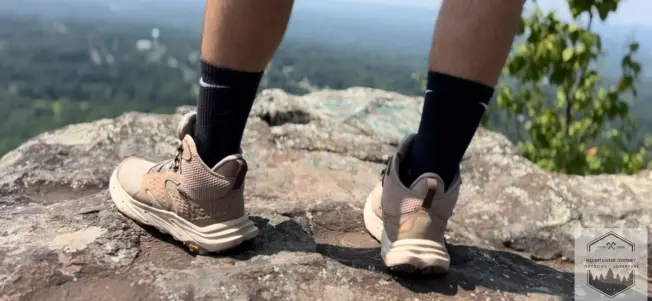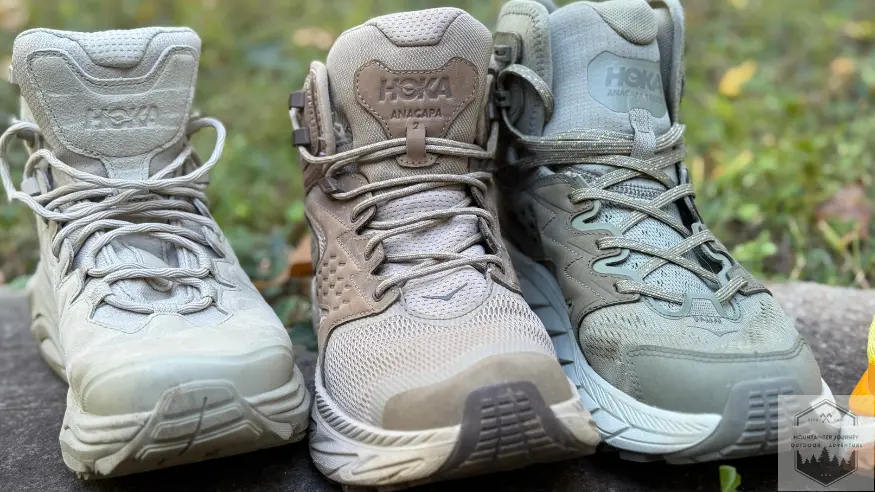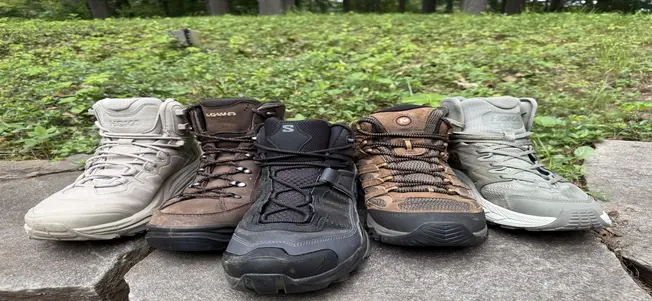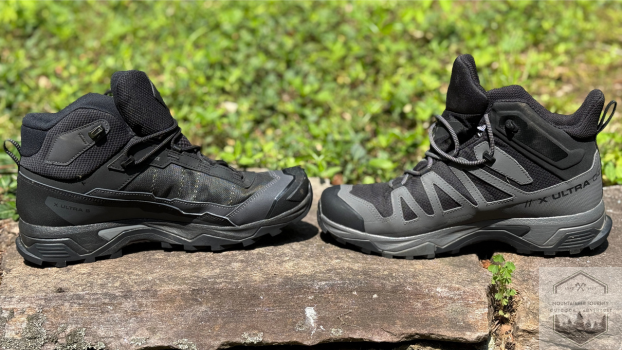Hiking Boots Vs Hiking Shoes | Which To Use?
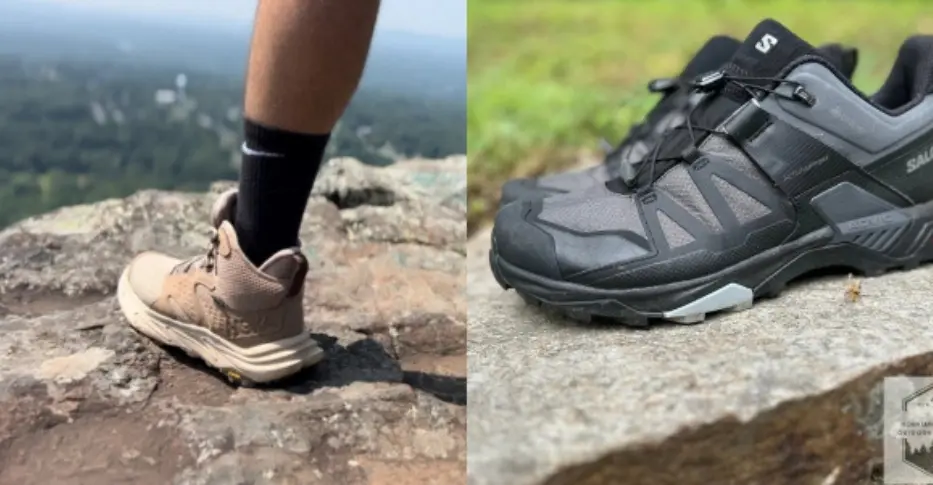
In this article, we will be discussing hiking boots vs hiking shoes. This has been a long debate between hikers; we’ll be going over the pros and cons of each, when to use each, and my personal experience with hiking boots vs hiking shoes.
Key Takeaways
Different hiking preferences call for different types of hiking boots or shoes. They differ in durability, breathability, weight, traction, and ankle support. Hiking shoes are often lighter and weight less. Hiking boots, on the other hand, are used for longer, more treacherous hikes and are built with heavier, bulkier materials.
My Experience With Hiking Boots vs Hiking Shoes

Over the past 15 years, I’ve spent at least thousands of hours outdoors wearing hiking boots and hiking shoes. I must say, there are reasons to use both. Starting off, a hiking shoe is usually lighter, more breathable, and has less ankle support than a hiking boot. They tend to have more synthetic material than leather, such as the Salomon X 4 Ultra. You tend to be able to move much quicker in hiking shoes because they are lightweight and increase ankle mobility.
Hiking boots, in my experience, are usually more useful for trekking and longer hikes. Typically, they combine leather and synthetic material to create a heavier design, such as the Hoka Kaha 2. They usually offer better ankle protection for increased stability.
However, it’s important to note that they tend to be less breathable. Since you have added ankle protection, you are able to hike on uneven terrain. It also allows you to carry a heavy backpack, among other benefits.
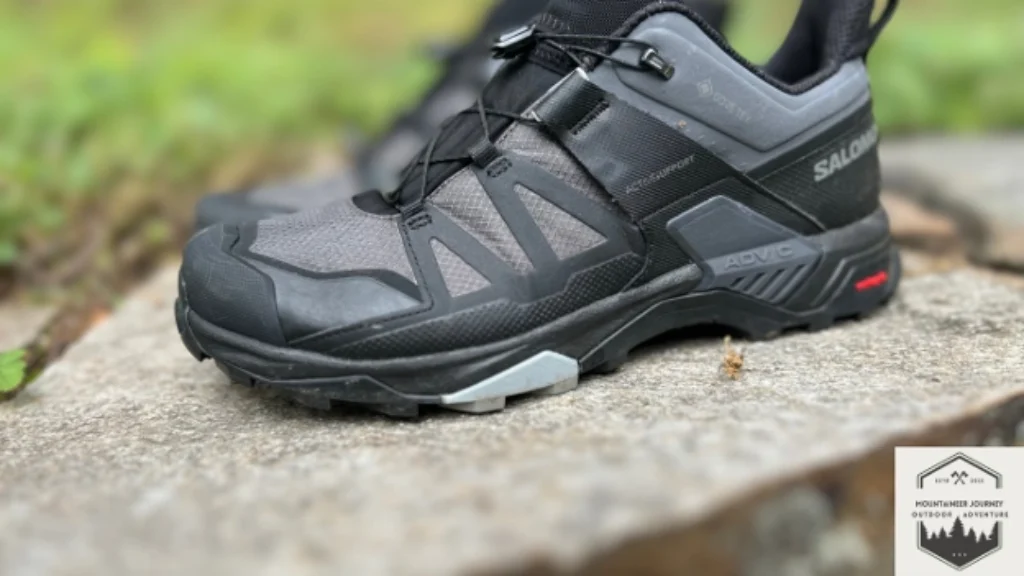
Hiking Shoes
Pros
- Lightweight
- Breathable
- Increased ankle mobility
Cons
- Flexibility
- Reduced Durability
Who Are Hiking Shoes For?

Hiking shoes, in my experience, are for normal weekend hikers who go through mild-to-moderate terrain. As you can see, hiking shoes are much lighter, allowing you to move much faster. Also, in warmer weather, people tend to prefer hiking shoes to hiking boots because they are more breathable.
All hiking shoes are known to have low-cut ankles, which increase your ankle mobility. Increased ankle mobility can be a pro and a con, depending on your activity. If you are someone who wants to move quickly through the trail, increasing ankle mobility will help you move much quicker and make better cuts.
However, if you’re moving through uneven terrain, you’re at risk for increased ankle sprains because there’s no lateral or medial support for your ankle.
The increased flexibility of hiking shoes is beneficial if you’re moving quickly; however, if you were going over uneven terrain, the flexibility of the shoe would then conform to the surface, reducing your traction. Due to their all-synthetic construction, hiking shoes typically lack durability.
Hiking Shoes Ankle Support
The majority of ankle sprains occur due to ankle inversion, which means the sole of your foot points towards the inside of your body.
As stated before, hiking shoes do not have as much ankle support as hiking boots do, so there’s an increased risk of ankle sprains. One must take this into account when considering hiking boots vs hiking shoes. If you are somebody who is hiking through very rough terrain or you are someone who easily sprains their ankle, we suggest hiking boots in this case.
Hiking Boots
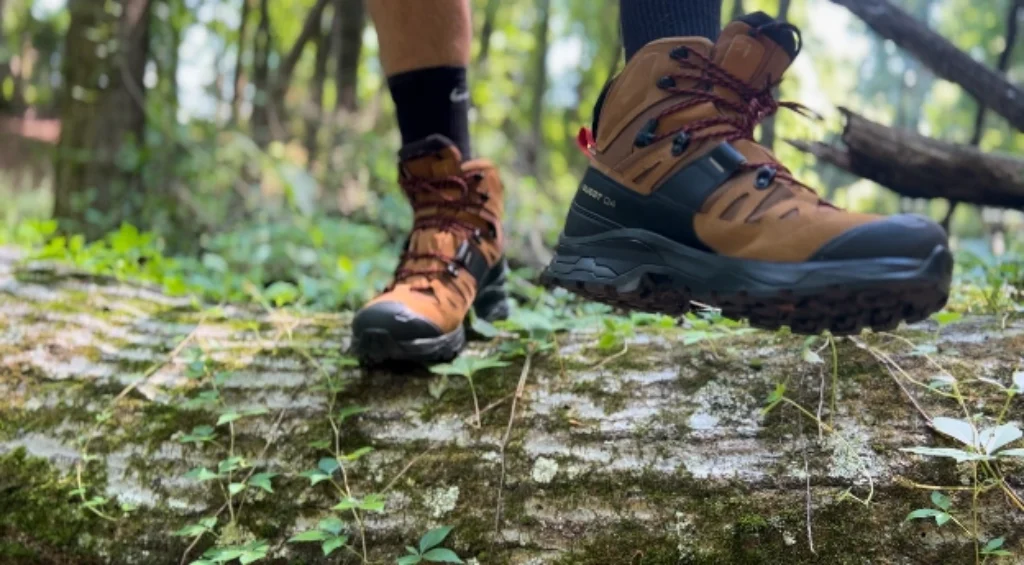
Pros
- More robust materials
- Ankle Protection
- Increased Stability
- Better shock absorption
- Backpacking
Cons
- +/- Ankle Mobility
- Less Breathable
- More Expensive
Both amateurs and trekking professionals can use hiking boots. Most hiking boots have a high-top construction, therefore increasing ankle stability and reducing ankle sprains. The outsoles are much thicker, therefore increasing shock absorption and allowing you to go through rougher terrain.
The combined leather and synthetic materials that make up the outer of the boot help with durability, as well as getting through bad weather conditions. Hiking boots such as the Salomon Quest 4 can range up to $240, whereas the Merrell Moab 3 Hiking Boot can be $160. Usually, hiking boots are more expensive because of the increased materials, as well as the larger design in general.
Personally, I always tend to use hiking boots because I am at risk of ankle sprains. My hikes tend to be in rougher terrain as well. I can also move quite quickly in hiking boots, but I know I won’t have the breathability or lightweight profile that a hiking shoe provides.
Final Say Hiking Boots vs Hiking Shoes
In the end, it is all about what you prefer as a hiker. Even if you’re trekking through rough terrain and prefer to move quickly, you can still wear hiking shoes, but be aware that you run a higher risk of ankle sprains or early shoe breakdown. Wearing hiking boots is fine for a cautious hiker, even if you want to move quickly.
In my experience, I have always preferred hiking boots because they tend to last longer too. I’m more willing to pay the extra price for a hiking boot that will last longer and get me through more hiking seasons. In the end, it all depends on your preference and hiking style.
Frequently Asked Questions
Trail runners vs hiking shoes
Trail runners are an even lighter version of hiking shoes. Typically, synthetic materials make them even lighter. They do not carry the traction of a hiking boot or hiking shoe. Imagine Trail Runners as sneakers designed for pavement running, but with a slight increase in ruggedness.
Trail runners usually have a shorter break-in period because they do not have as much material. Trail runners obviously put you at increased risk for ankle sprains, and there is even less ankle protection because all of them are low-cut.
Trail runners serve their intended purpose of facilitating running on hiking trails. You may also use Trail Runners while on a fast-paced hike; you do not necessarily have to be running. Trail runners also have the option of coming with spikes, which may help with traction on uneven or unpaved paths.
What’s the difference between a hiking shoe and a hiking boot?
The primary distinction lies in the materials used: durability, breathability, weight, and ankle protection. The biggest differential factor is ankle protection.
Can you use hiking boots for walking?
Yes, they can, as I explain in my article about the Columbia Newton Ridge. In the winter, I use these as walking shoes. However, be aware that your hiking boots will experience increased wear and tear and may not be as durable as if you were simply hiking with them.
Do I have to wear hiking boots to hike?
No, you do not. You can even wear sneakers if you’d like. If you use your shoes or sneakers, you are at increased risk of ankle sprains and breakdowns. During a hike, however, we always recommend wearing hiking boots.
Adventure Awaits,
Tyler

